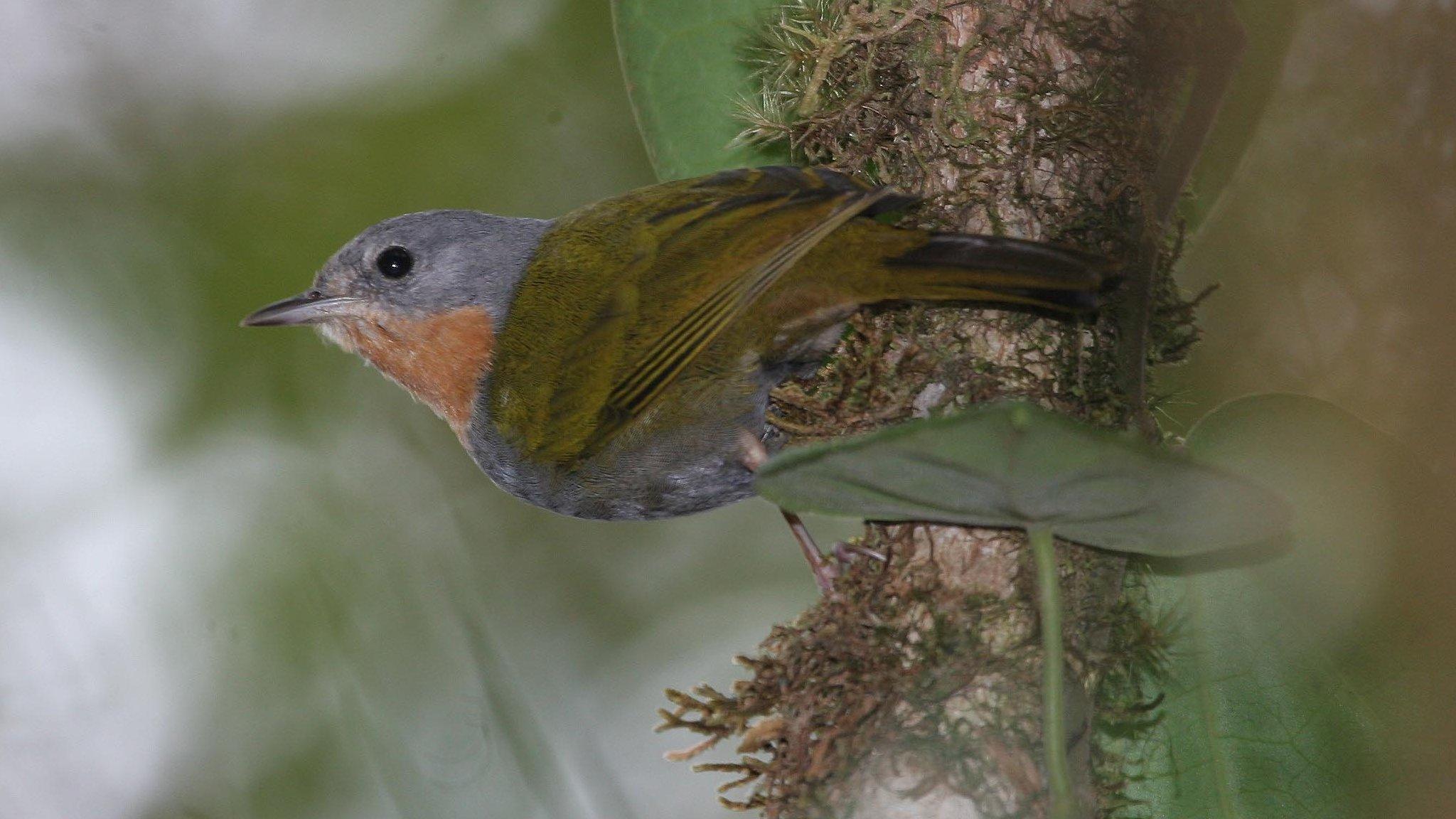Song heralds arrival of new bird species
- Published

The surrounding dense habitat makes the bird difficult to spot but its song reveals its presence
The distinctive song of a secretive and elusive bird in central China has helped researchers to identify it and deem it to be a new species to science.
Scientists first heard the harsh call of the Sichuan bush warbler in 1987, but they only recently gathered enough data to formally describe it.
The new species, Locustella chengi, has been named after Prof Cheng Tso-hsin, a distinguished Chinese ornithologist.
The details have been published in the Avian Research journal, external.
"These birds are almost impossible to see when they are not singing," explained one of the scientists to describe the new species, Per Alstrom from the Swedish Species Information Centre, based at the Swedish University of Agricultural Sciences.
"If the species had not been singing when we first heard it back in 1987, we would never have seen it.
"They are incredibly difficult to see because they are so secretive, sneaking around in the dense vegetation, close to or on the ground. But when they are singing, you can hear them from quite a long distance.
He told BBC News: "By being patient or using tapes to attract them, you can see them - although they will stay in the dense habitat."
Harsh tones
The song of the new species is harsher than that of its closest relative, the russet bush warbler, and consists of a "drawn-out note followed by a shorter note that are repeated in series".
The Sichuan bush warbler's call is harsher than its closest relative, the russet bush warbler.
The team of researchers, from Sweden, China, Vietnam, the UK and US, carried out DNA analysis that showed the two birds were very closely related and were probably separated from a common ancestor about 850,000 years ago.
Prof Alstrom explained that the publication of the paper formally describing the Sichuan bush warbler came after a search lasting almost 30 years.
"I have been trying to find this bird ever since we first heard it back in 1987," he said. We suspected that it was something different, something new (to science).
"Last year, we had received information from colleagues that both these birds - the unknown species and the Russet Bush warbler - were present on the same mountain.
"We had not found both of them together previously, so we went there specifically to get more information on how they interacted together; whether they occurred in different habitats, etc, to see if they were actually ecologically and reproductively isolated in these areas."
Although the two species have slight differences in proportions, it is the the birds' songs that mark a clear distinction.
Prof Alstrom suggested that was probably the result of random processes that had resulted in the two species evolving different vocalisation patterns.
"It is probably a combination of chance factors, such as individuals undergoing vocal "mutation', and also sexual selection," he suggested.
"Songs are used to attract females and to deter other males from their territory, so there is probably a factor of strong sexual selection evolution involved in these differences."
- Published5 March 2015
